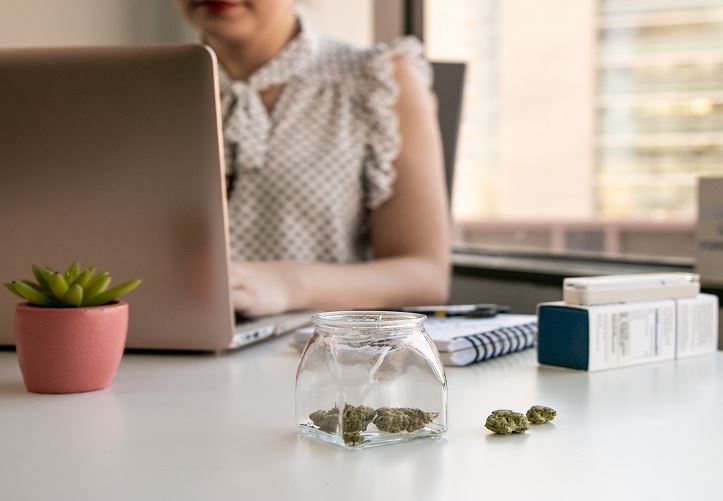Balancing Cannabis Use and Workplace Safety: New Challenges in a Legal Era
As marijuana legalization spreads, employers face a growing dilemma: how to uphold safety and productivity without infringing on workers’ rights.
Since recreational cannabis was legalized in New Jersey in 2021, employers have entered a legal gray zone. The goal: protect the workplace from impairment while respecting employees’ right to consume cannabis off the clock. But that’s easier said than done.
New Jersey’s cannabis industry surpassed $1 billion in revenue in 2024, a 25% jump from the previous year. For businesses, that figure is more than an economic milestone—it’s a sign that marijuana use is increasingly mainstream, and likely affecting the workplace in ways not yet fully understood.
“Employers ask me all the time if cannabis is a problem,” says Denis Connell, co-founder of Advanced Training Products (ATP), a company specializing in workplace impairment risk. “There’s a billion-dollar reason why the answer is probably yes.”
From Anti-Drug to Pro-Safety
Connell and his business partner Jim Coyle launched ATP shortly after the CREAMM Act passed, legalizing adult cannabis use but also shifting the burden of detecting impairment to employers.
“We’re not anti-cannabis,” Connell emphasizes. “We take a safety-first approach that aligns with the law—focusing on impairment, not lifestyle choices.”
This philosophy reflects a key shift in post-legalization policy: employers can no longer rely on traditional drug tests alone, as these may detect cannabis weeks after consumption without showing real-time impairment.
New Rules, New Responsibilities
According to Lauren Iannaccone, a partner at Connell Foley law firm, New Jersey law still gives employers the right to ban cannabis in the workplace—meaning no use, possession, or sale on company property.
But enforcing those policies fairly is complicated. The state now requires an “objective reasonable suspicion test” to prove current impairment. Urine tests aren’t enough. Employers must also perform a physical evaluation based on observable signs like behavior or motor skills—ideally by a trained expert.
“You can’t take adverse action just because someone used cannabis days ago,” Iannaccone says. “You need credible evidence of current impairment.”
The Limits of Drug Testing
Many employers are now rethinking drug screenings altogether. Lindsay Dischley, head of CSG Law’s employment group, says businesses are pulling cannabis from pre-employment and random tests because traces can linger for up to 90 days.
That’s where the distinction between intoxication and impairment becomes critical. “If someone used marijuana on Friday night, they might still test positive on Monday, but not actually be impaired,” says Joshua Bauchner, who leads the Cannabis Law practice at Mandelbaum Barrett.
The real challenge? There’s no equivalent to a breathalyzer for cannabis—no quick, accurate test to prove someone’s high at work.
Medical Marijuana: A Legal Gray Area
Another layer of complexity involves medical cannabis. While federally classified as a narcotic, New Jersey law treats it as a valid treatment—and patients are protected under the Americans with Disabilities Act (ADA).
“You have to tread carefully,” Bauchner warns. “Ask the wrong question, and you could breach medical privacy laws.”
However, a court ruling in late 2024 gave employers a bit more leeway: employees no longer have an automatic right to sue over cannabis-related disciplinary action—though they can still file complaints through state agencies.
The Role of the WIRE
To comply with state law, businesses must designate a WIRE—a Workplace Impairment Recognition Expert—to assess if a worker is currently impaired. The problem? Guidance on training these experts is sparse.
“In theory, it makes sense,” Dischley says. “But in practice, there’s a lot of confusion.”
And for smaller businesses, it’s not practical. “Whether you’ve got three employees or 30,000, you’re expected to have someone qualified to spot signs of impairment,” Bauchner adds. “But how do you know if red eyes are from weed—or a cold?”
Dischley recommends that impairment evaluators be independent from direct supervisors, but in small teams, that’s often impossible.
Looking Ahead: From Risk to Readiness
Legal cannabis is here to stay. For employers, the focus now is on compliance, clarity, and communication—adapting policies that balance safety with civil rights.
“There’s no perfect solution yet,” Connell admits. “But we’re getting better at asking the right questions.”
Related Reading for Deeper Insight
To better understand the wider cannabis landscape and its impact on business, check out our deep dives into national and industry-specific trends. Learn about the rise of edibles, vaping, and dabbing in our article on consumption trends and CDC guidance. Explore how California’s cannabis sector is clashing and coexisting with the wine industry in our report on market dynamics. Or dive into the latest developments in the New York cannabis investigation of 2025, where policy and regulation continue to evolve.

